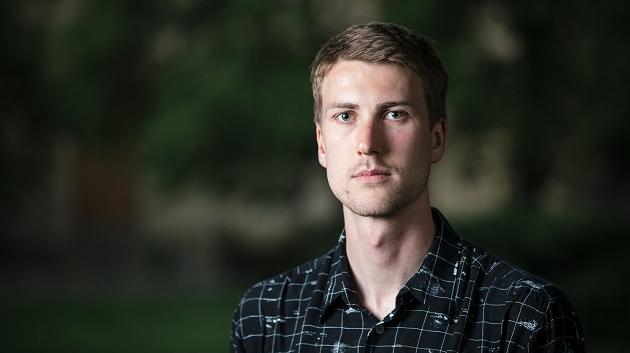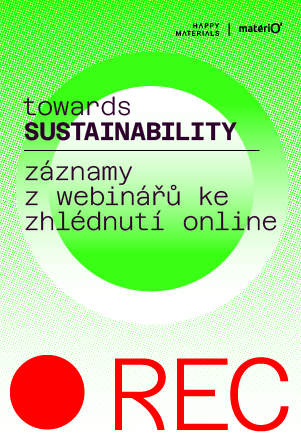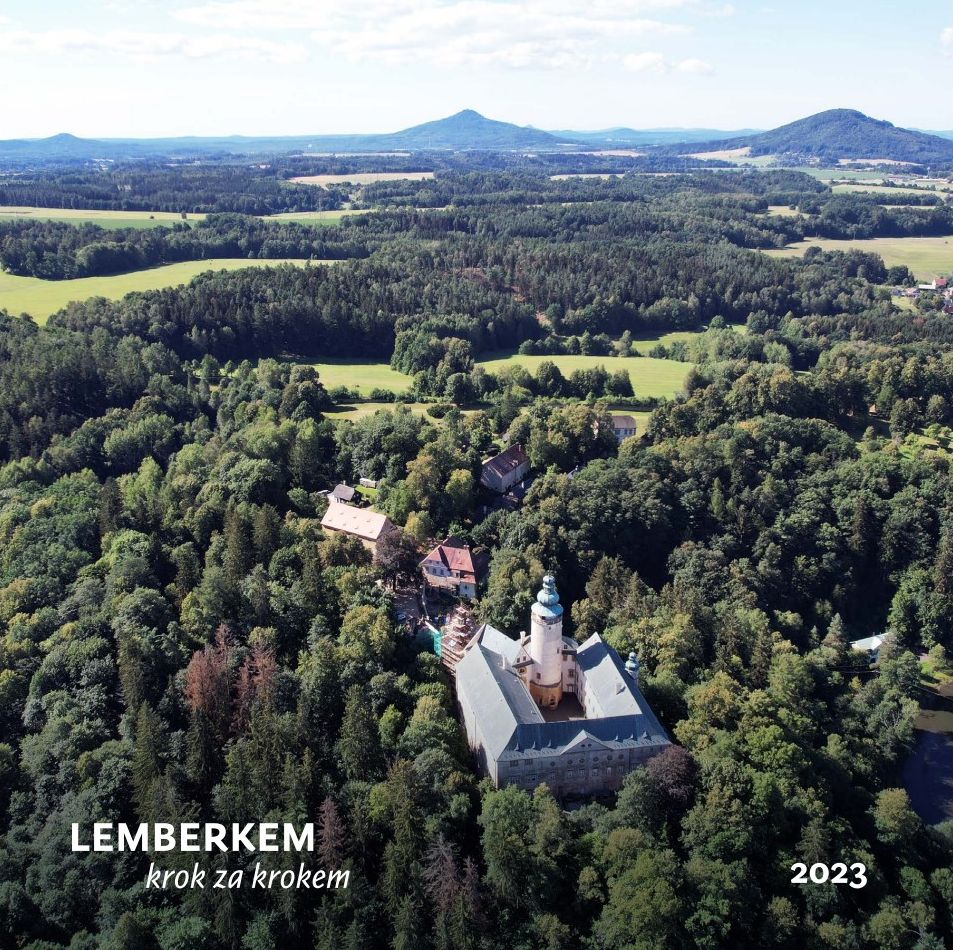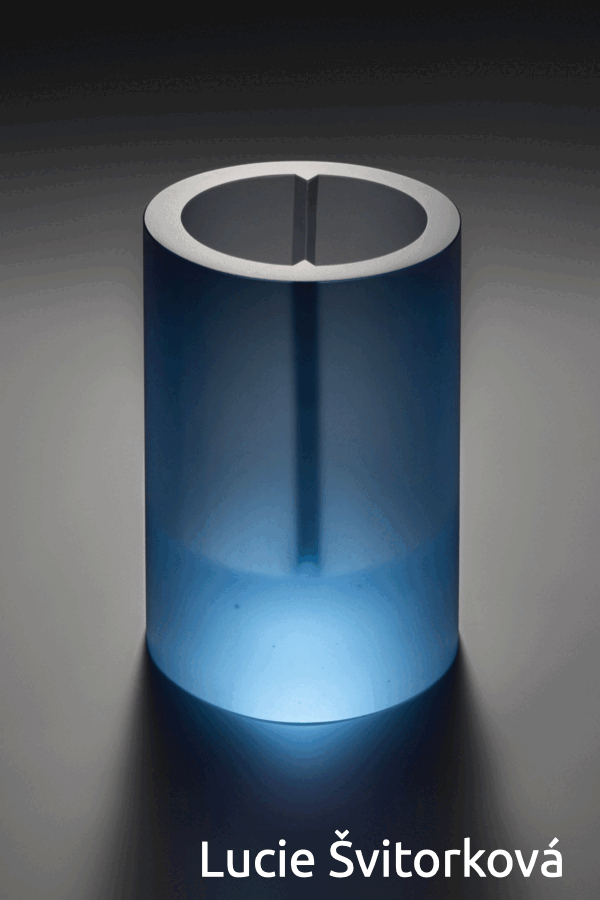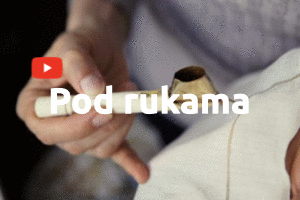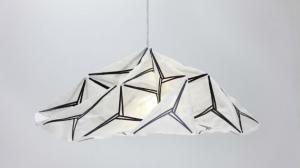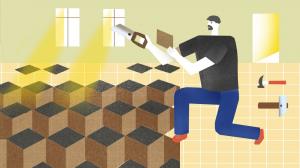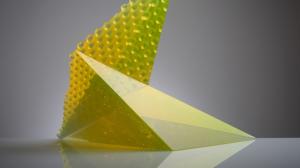Interview
Designer Basse Stittgen – squeezing blood into stone
A bowl made from animal blood can serve to foster a positive sense in users of supporting the processing of waste products from abattoirs. Albeit, resistance to using such a bowl as a utensil for one’s peanuts is understandable. But such mysterious dark blood-red bowls offer many layers of meaning, far exceeding their mere potential practical function. After all, their creation was preceded by the slaughter of animals, and numerous experiments carried out by designer Basse Stittgen.
Interview by: Kateřina Přidalová • Conference portrait photo: Tomáš Princ; Photos of works and installations: Basse Stittgen’s archive
Basse Stittgen, who has cultivated a self-taught technique for manufacturing such “blood bowls”, never sought to create a commercially viable bio-plastic from waste materials. Simply put, the intention was not to create dishware or utensils from non-traditional materials. Rather, his conceptual “Blood Related” project sought to highlight an essentially invisible component of our day-to-day consumption. “Previously, cultures had the skills to process blood, and the slaughter of animals was part of everyday life,” notes Stittgen. “But the situation changed when we shifted abattoirs outside of our urban communities.” Kateřina Přidalová sat down with Basse Stittgen last year during a hot summer’s day. While the pair discussed blood, a swarm of flies buzzed around their heads as if sensing the topic of discussion. Stittgen was emphatic that his work with blood had been a life-changing experience.

(Basse Stittgen presented his “Blood Red” project at the Sketch the Change conference, organised by the matériO Prague materials library in June 2019. The following interview took place at this conference)
When I touch your cow blood bowl, it feels a little strange. Presumably, this is hardly a “user-friendly” material which could be used commercially. How did you end up working with this bio-material, and what was the focus of your studies?
I studied product design in Germany, and then went on to study social design at the Design Academy in Eindhoven. And it was at this latter institution that I began to work with blood from abattoirs. Such blood represents a huge volume of waste product, and little is known about it. And so the basic idea behind my project was to highlight the ethical problems associated with industrial scale abattoirs. The products I produce from blood are not merely destined for museums; nor am I seeking to pioneer any kind of material innovations which could have a commercial use.
So you are not trying to develop a new product that could make its way to the wider market.
If I were to view this effort in terms of potential profit-making, then it would lose what for me has been its paramount socio-critical function. I am convinced that the problem of abattoir waste will not be solved by merely finding a more effective use for blood.
What, then, is the aim of your project?
The collection of utensils, ostensibly intended for day-to-day usage, which I designed and then produced from blood, serves to cast an unsettling light on something that is otherwise invisible. Today, many people don’t even get to see the animals destined for slaughter. All they know are pieces of meat bought in the supermarket far removed from the true animal origins of the products. I believe that it is important to highlight the practices of industrial-scale abattoirs. I want to demonstrate that the products reaching the supermarket shelves are not as innocent as they would like to portray themselves.
Your gallery installations are comprised of works that you present on table surfaces – the evident intention being to evoke the setting of a dining table. But at the same time, such installations also convey a kind of morbid funereal atmosphere.
They are tables with utensils. And these are supplemented with triptychs on the walls containing etchings illustrating the alchemistical aspects of processing blood – from its collection right through to the beating of a cow’s heart, which enhances the intended emotional power of the installation. The end result is an installation, which on the one hand symbolises life, and on the other hand represents death. The aim for me was to present suggestive confrontations.

An inherent problem in terms of animal-based products is when former waste materials become highly-prized commodities – for example with animal hides and increasing demand from leather manufacturers. Such market pressures then lead to animals being slaughtered directly for their hides – something that had previously been seen as a secondary by-product. Could this be an issue with respect to blood?
Yes, it is a problem when animals today are slaughtered for their hides, meaning for something that was previously just considered to be a secondary product. But blood still remains just a by-product of animal rearing. But I am aware of this issue, which is why I decided to not sell my works. I don’t want to risk creating a fresh industry based on animal blood.
Your project, however, doesn’t end with an exhibition – what is next?
We are currently preparing a publication that seeks to publicise the issue of abattoirs in conjunction with the Amsterdam-based Het Niewe Instituute. I think that many of the current debates over this subject aren’t particularly objective. Very strong views, condemnations, and emotions exist on all sides. But the issue is far from black-and-white, which is why objectivity and a critical distance are necessary. I am engaged in analysing and studying all aspects associated with the infrastructure that leads to the creation of commercial animal blood. We in fact know very little about how this branch of industry works, and how animal-based waste materials are processed. Our aim is to create a foundation of knowledge that would help people to form non-emotive opinions about this subject. In order for the issue to not be so abstract, I seek to show the tools, numbers, images and statistics associated with the volume of blood produced. In short, I want describe the entire process so as to make it as transparent and comprehensible as possible.
Let us return to blood as a material. You have said that your aim was not to create a commercially viable material. Could you not merely have written a publication on this subject and avoided personally processing and working with blood?
When I began analysing the wasting of abattoir animal by-products via the conducting of various experiments, creating materials from blood was one of the many possible approaches available to cast light on this whole issue. One can examine this issue from various perspectives, and creating a blood-based material is merely one such way. When one considers blood as a material, then it is a type of bio-plastic, and offers an array of potential material uses – and this is what led me to go down this path. And so creating a particular material was not the goal, but rather opening up an avenue of wider debate.
Why do you describe blood-based material as a “bio-plastic”?
In a chemical sense, blood is indeed a true bio-plastic. It is a biopolymer, which is processed and shaped via the application of heat and pressure. That said, I myself am reluctant to label it as a bio-plastic because this is such a broad and ultimately inadequate term. In a cultural sense, blood is valuable and possesses many varied meanings across cultures and religious denominations; this is why, if I were to label the material as a “bio-plastic” it would lose the kind of cultural references that I also find to be so crucial.
You mentioned the symbolic value of blood during your presentation at the Sketch the Change! conference. Notably, you made the case that you were interested in much more than simply creating a new production material.
And that is what makes it so interesting. Blood possesses strong symbolic meaning in various religions. For example, the drinking of Christ’s blood, shed during his crucifixion, is an important symbol in Christianity. And in Islam, blood represents the soul of animals, which is why it is first removed from meat before consumption can take place. Then there are also other strong cultural and social aspects such as “people of the same blood”. At the same time, blood is also very controversial. On the one hand it is something that gives life and is there at the beginning of life, but at the same time it is also associated with death. It is a powerful substance which represents both life and death. And this ultimately is also reflected in my installation, where my material represents death while, conversely, the beating heart of a cow represents life.

Did you create your own equipment to process blood?
I created multiple aluminium moulds of various sizes, a special oven, and a press containing a specialised locking system. The blood is dried out, pressed into a mould and heated in the oven. At first I didn’t know where to begin, and so I conducted various experiments. I took a long time before I arrived at the solution. Developing the technology was a very pleasant part of the project. The advantage was that I maintained control over the entire process.
I understand you also tried using your own blood. Is there a qualitative difference between human and animal blood?
There’s no difference. Dried blood possesses the same properties, and in the end you still end up with a black art object. But for me continuing to work with abattoir waste is important, and so that is where I continued to source the blood I required.
Is there anyone in the world of art or design who served as an inspiration for you? Had anyone else studied the potential of blood prior to you?
Experiments with blood as a material in the world of art are far from unique. What is interesting is that when I developed the material, I approached the process the same way as if working with any other raw material. Back then, the symbolic aspect of blood was unimportant for me. I simply wanted to develop a bio-plastic without any additives – from 100 percent blood.
How did you proceed?
At the start I used a very old French recipe from 1850 for the production of material from blood. The recipe mixed bovine blood with soda. This was also heated and pressed into plate-like forms. But this material was forgotten, first superseded by bakelite, and later by bio-plastics from fossil fuels. And so even around 150 years ago, the technology existed that could heat and utilise blood for its viscous properties.
Blood was also routinely used for furniture-binding glue. After all, abattoirs were once common and visible components of towns; people knew about them, and viewed them as part of their everyday lives. They knew how to work with blood in various ways. The change only occurred when large abattoirs were shifted outside of urban areas and the slaughter of animals became invisible. People have lost their direct contact with the death of livestock. Today, all we have are images in which we see the mistreatment of animals, and this contributes to the view that blood is a very negative thing. I write about all this in the aforementioned publication. The subject tends to be dominated by strong emotions, which means that no critically detached debate can take place.

This is often the position adopted by members of the vegan community, supporting their viewpoint with dramatic videos filmed in abattoirs. Are you a vegan yourself?
I am not a vegan. But since working on this project, I have been eating meat a lot less frequently. I changed my habits, for sure. Indeed, I have adopted a rather critical view towards the meat production industry. And I believe that everyone should do that. We cannot close our eyes and only choose to see what we want to; to live a carefree life and ignore the interconnected nature of things. At issue is an ethical decision to be made by each of us.
So now you don’t eat meat derived from large industrial slaughterhouses?
We live in complex times, and as consumers, we need to be far more vigilant in terms of ensuring that we act as ethical consumers. What I concern myself with more is the source of the food I eat. For example, I want to know how the animals lived; where and if their rights were observed. What am I as a consumer willing to accept and what not? That is a question of personal responsibility.
But the project hasn’t just changed my consumer habits, it has also influenced me as a designer. I work with certain small family-owned abattoirs, and this is something that I personally find far more acceptable. Of course, there is the question of whether there is really such a thing as a perfect abattoir. After all, the meat-production industry is problematic in principle.
Imagine a world in which all the wishes of vegans were fulfilled – no killing, and that means no rivers of blood. That would, of course, mean no blood-based material created by you.
If I consider that the conference at which I made a presentation is focused on materials of the future, then I have to laugh. Because my material should, after all, have no future at all – and ideally should not even exist.
12. 2. 2020
LATEST COMMENTS
16. 9. 08:38
Добрый день!
Когнитивно-поведенческая терапия ...
RobertLycle - Oakie friends from Prague forest entertaining the Internet
16. 9. 08:20
Хай!
Блэкджек для чайников и профи: универсальное ...
AndrewDAh - Barbora Vaníčková: I am a seamstress, but trust me, I am not stupid
16. 9. 08:14
Хай!
Блэкджек для пацанов: полный разбор от новичка ...
AndrewDAh - Barbora Vaníčková: I am a seamstress, but trust me, I am not stupid
